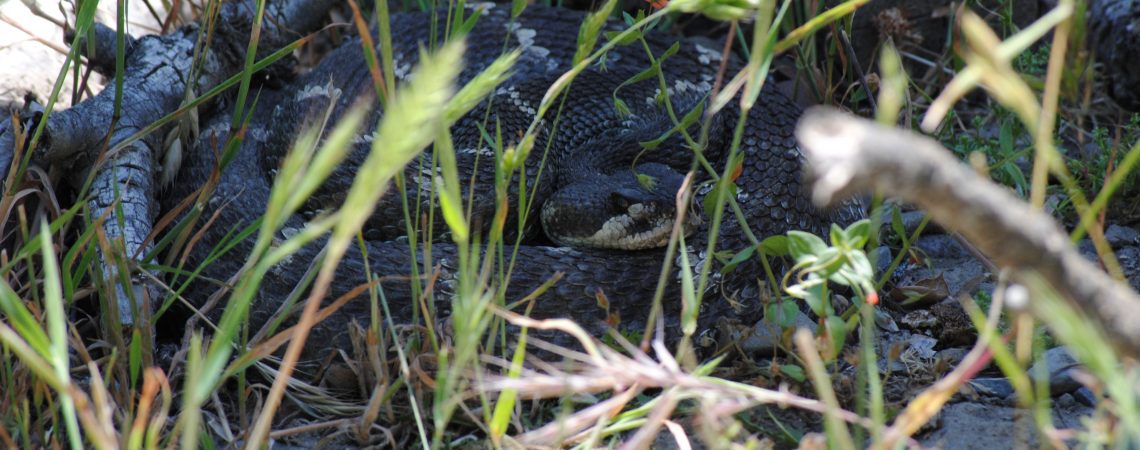Rattlesnakes are very patient, but efficient hunters.
They spend hours, sometimes days, coiled in the same spot, waiting for prey to come within striking distance. They successfully hit about 50% of those prey they strike at. But prey aren’t always passive players in these interactions.
One of the most interesting examples of this comes from California ground squirrels. When these squirrels spot a snake, or are moving through snake habitat, they often approach the snake and rapidly wave their tail side-to-side, a behaviour known as tail-flagging.
Why would they do this? According to the predator-deterrent hypothesis, this behaviour could benefit both the snake and the squirrel, because the squirrel would be signalling to the snake “you aren’t going to catch me”, so it would be in the snake’s best interest to find food elsewhere. But remember, squirrels also tail-flag when they haven’t seen a snake yet, but are moving through snake habitat. This is incredibly interesting because it suggests that tail-flagging may influence snake behaviour in a novel way.
My Master’s advisor and I decided to determine first whether snakes responded to these displays.
Through thousands of hours of video and manned observations of rattlesnakes under natural conditions, we found that squirrels influenced snake hunting behaviour in two distinct ways:
(1) Snakes were much less likely to strike a tail-flagging squirrel, unless the squirrel tail-flagged in close proximity to the snake (~12-13 cm). It seems that snake’s don’t tend to strike at tail-flagging squirrels because these squirrels are much more likely to dodge out of the way than non-tail-flagging squirrels. Therefore, it appears that tail-flagging advertises a squirrel’s vigilance toward snakes, and not necessarily that they have been detected.
(2) We also found that snakes left their ambush sites sooner than they normally would if they were tail-flagged at by adults. However, if snakes were tail-flagged at by pups, they would stay in the area and actually had a higher probability of striking a pup. These different responses of the snake correlate with the effects of adult and pup tail-flagging on other squirrels nearby. In other words, when an adult squirrel tail-flags, other squirrels become more vigilant of snakes. However, if a pup tail-flags, nearby squirrels don’t seem to pay much attention. Therefore, it makes sense for snakes to leave after being tail-flagged at by adults (much less likely to capture a squirrel), but stay after being tail-flagged at by pups (much more likely to capture prey because there are lots of other pups nearby that are still unaware of its presence).
To date, this work provides one of the most rigorous tests of the predator-deterrent hypothesis. However, to really get at the underlying mechanisms that determining snake responses to squirrel displays, we need to be able to manipulate the tail-flagging behaviour of the squirrel. We have a robotic squirrel that is helping us do this.
Over the course of my Master’s research, I also provided the first description of rattlesnake behaviour while they are “waiting” in ambush. Turns out that they aren’t simply inactive, but often open their mouths (like a yawn), then extend out from their coil and explore their surroundings while flicking their tongue for chemical cues (we call it “chemosensory probing”). This behaviour occurs much more frequently at night (possibly to compensate for impaired vision or because they don’t have to worry as much about being seen by their prey). We think that mouth gaping and chemosensory probes may allow a snake to continually assess its ikelihood of capturing prey at its ambush site, but this is just conjecture at this point.
